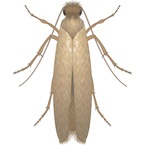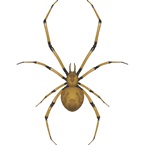Species category: Beg bug and Flea
Order: Siphonaptera
3 different species
1. Ctenocephalides felis (cat flea)
2. Ctenocephalides canis (dog flea)
3. Xenopsylla cheopis (tropical rat flea)
Family
Boreidae
Description
Adults are 1-8mm in length; brownish in colour. The larvae require precise conditions which are associated with the habitats and nesting habits of the hosts rather than the characteristics of their blood. Fleas are laterally flattened (side to side), making it easier to navigate through hair and fur.
Behaviour
Adult fleas live exclusively as parasites of warm-blooded animals. They will feed on many animals. Fleas don’t have wings but are the most impressive jumpers in the insect world. Moving from host to host by taking impressive leaps, they reach up to 100-150 times their own height; that is 18cm vertically and 33cm horizontally.
The eggs often drop to the ground from the host and inhabit carpets and other surfaces where they find organic matter and other debris to feed from.
Region
Fleas are prevalent all around the world.
Habitat
Fleas are most commonly found on mammals, although birds may also be attacked. They show a certain degree of host preference, but are by no means host specific and will feed on other animals in the absence of the normal host.
Risks
Once a flea finds a host, it is reluctant to leave. Each species has the ability to cause problems for humans and animals.
As vectors, they transmit diseases such as murine typhus and tapeworm. Their saliva contains allergens that can trigger reactions in both animals and humans. Bites are generally harmless but cause inflammation, itching and a punctured wound leads to secondary infections and hair loss when victims scratch the wounds. A large infestation causes anaemia that can kill small animals.



